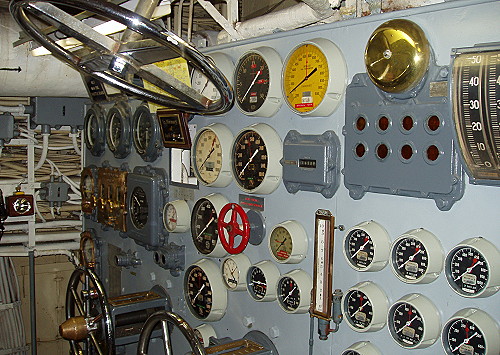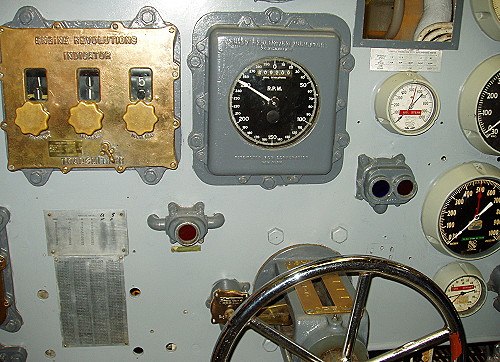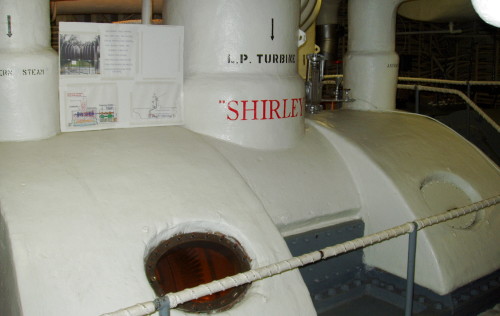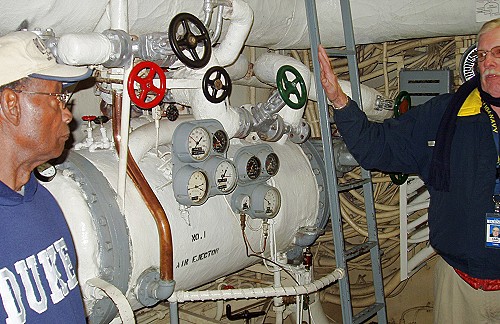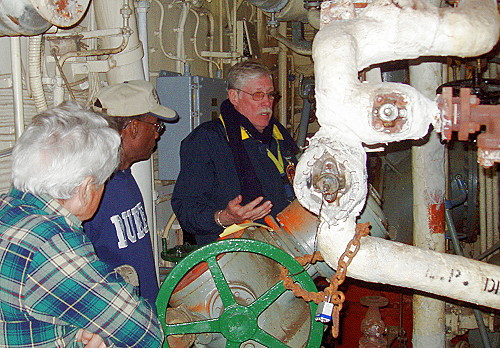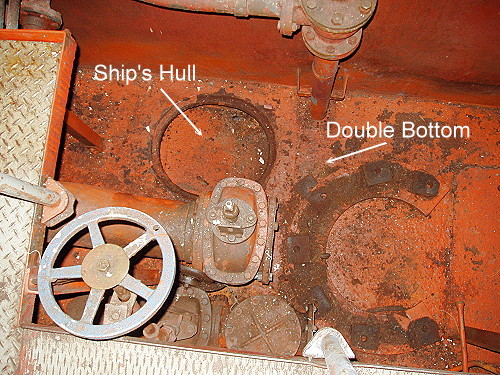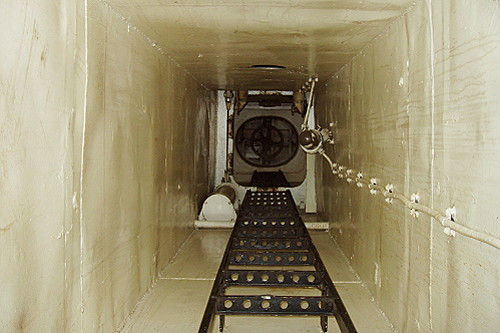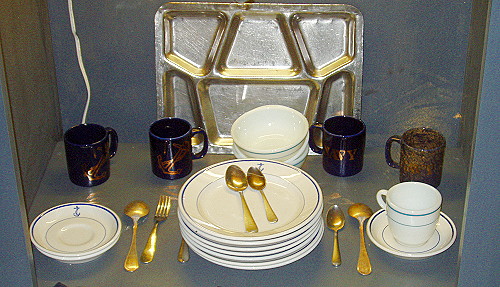USS Hornet Aircraft Carrier Tour
A trip down memory lane — Alameda Point, CA —
|
|
As luck would have it, when we met our guide for the Engine Room Tour, we saw a familiar face, our guide for the remainder of the day was Carl, the docent who led us on our first tour. Carl waited for others to show up, but once again our trio of veterans were all that showed up. Our plan to avoid crowds by coming to the Hornet in the middle of the work-week seemed to be working.
Our first stop in the engineering area was the place where the orders from
the wheel house are received. The orders are then used by the engine room crew
to set the speed of the ship. It seems that even though an engine-order-telegraph
orders a speed such as, "all ahead two-thirds", the actual speed often
was fine-tuned, so to speak. To fine-tune the speed, the actual number rotations
of the propeller shaft or RPMs can be set between 000 and 999 to the actual running
speed of the ship.  Carl enlightened us as to the use of desalinization equipment used to produce an unending supply of fresh water from the sea. The water produced was used in the steam propulsion system as well as for other uses throughout the ship. On my ship, one use of the fresh water produced was to supply the showers and sinks in the heads. Toilets were flushed with salt water. And in those days the sewage went right out the side of the ship into the sea.  As we moved through the engineering area we were shown various work areas that contained machine shop equipment and an electric repair shop. I had forgotten how small such areas are; it is something that one gets used to with time.  We were so far down in the ship that Carl pointed to an opening where we could see the bottom of the ship. A hole in the double hull allowed us to see a small area of the hull that was the actual bottom of the ship which was all that was between us and the sea.  Then looking up we were shown an escape hatch where crew members could climb a ladder all the way to a deck where they could get to the outside world. I could have climbed the ladder back when I was in the Navy, but today I don't think I could get to the top very fast. 
Carl led our group back up to the second deck and turned us loose. He said we were free to explore until closing time. With that, we spent a little more time looking around while trying to find our way out. We passed another galley and a mess deck. At one point there was a display of the various dinnerware used aboard a ship. Most of what we saw was used by Officers and Chief Petty Officers. The average enlisted man ate off of simple stainless-steel trays that had divided areas that held different types of food. It didn't take very long for our trio of veterans to find our way back up to the museum store where we could leave the ship. As I walked down the gangway I was looking across the pier where my ship would have been tied-up back in my Navy days. This visit to the USS Hornet Museum was a fun trip down memory lane. I tried to make a connection between the museum and my OFS HOME stories. However, I feel that anybody, RVers and non-RVers alike, would find visiting any military museum very interesting. If nothing else, it might help to understand some of the sacrifices made everyday by our men in uniform. |
|||||||||||||||||||||||||||
Disclaimer Copyright 2015,OurFunStories.com. All rights reserved. |

